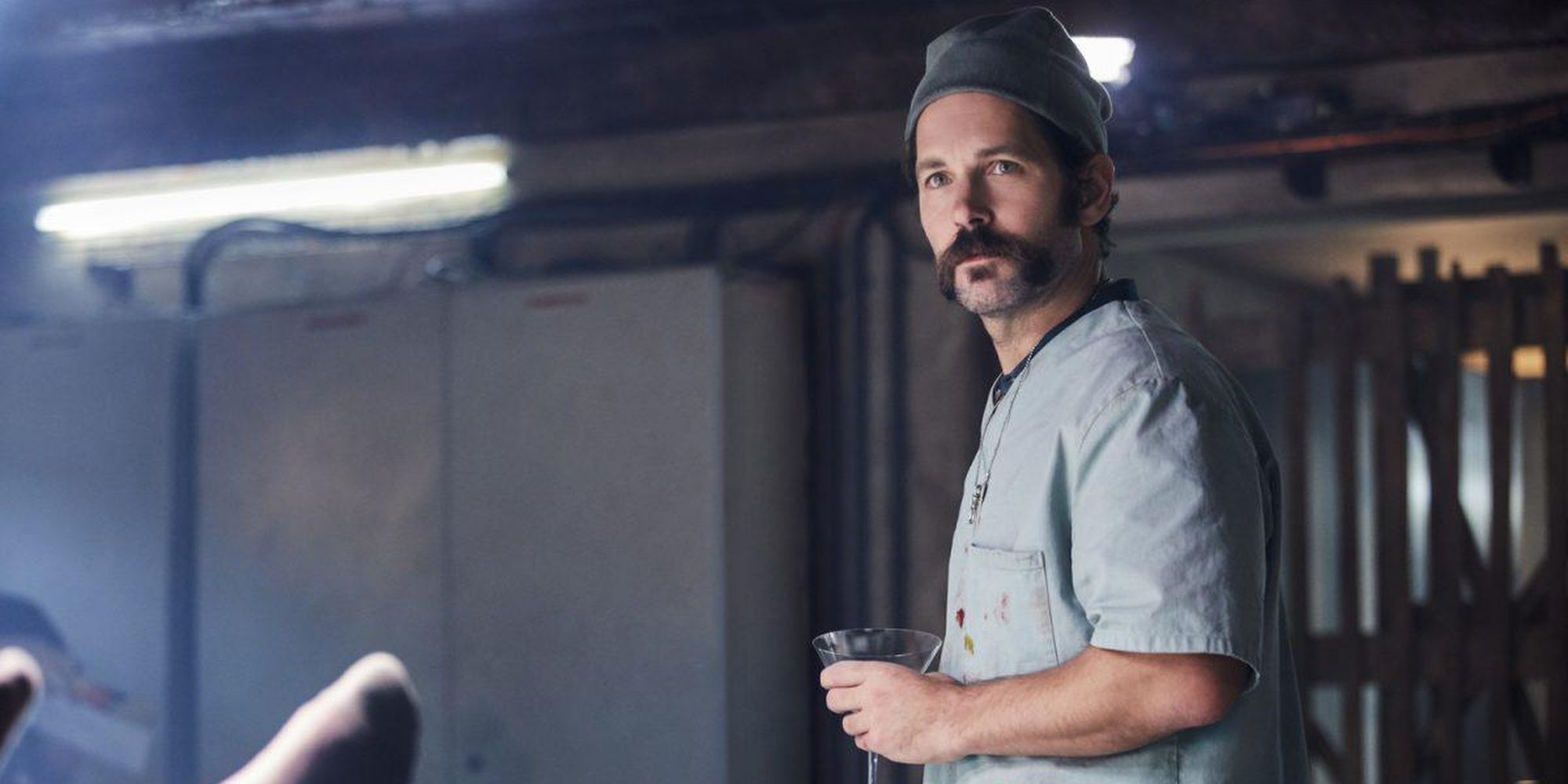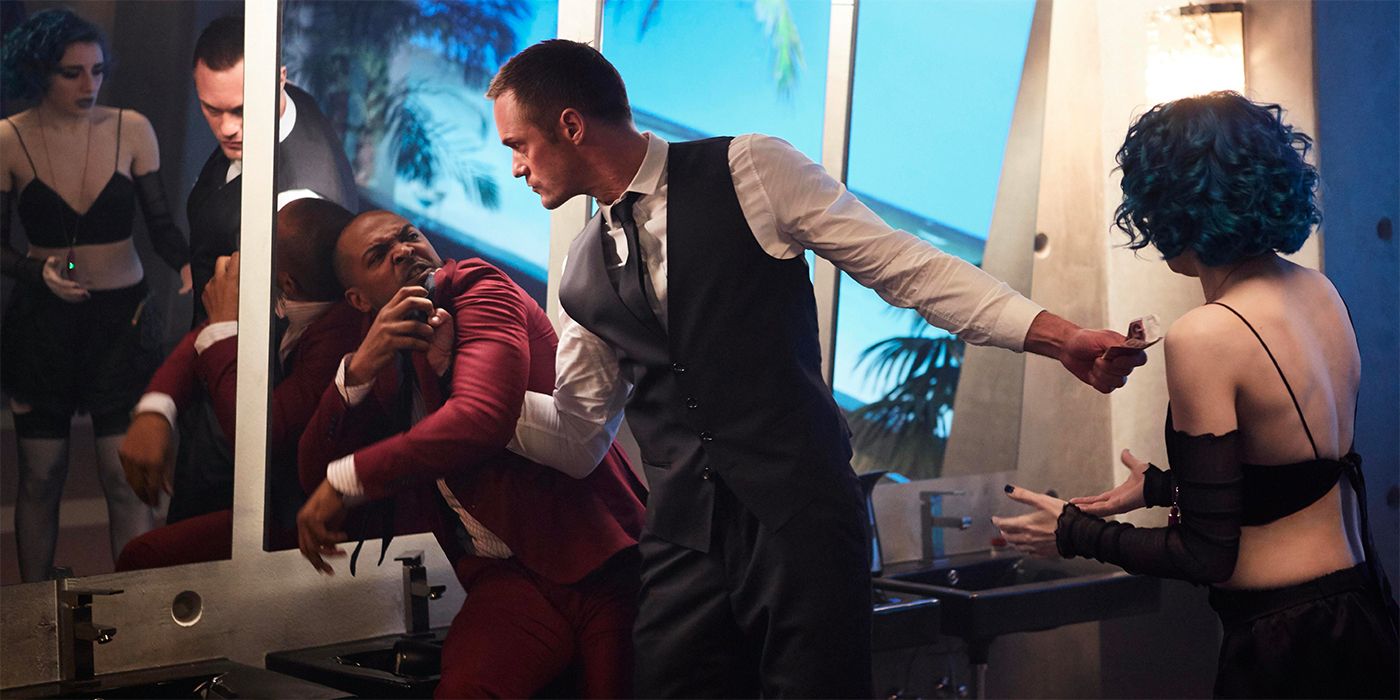The Big Picture
- Netflix’s rise as a top producer of movies surprised many, but during a brief period, they greenlit unique and undeveloped projects from major directors.
- Mute is a wild sci-fi noir film set in a cyberpunk urban complex in 2035, but its story falls flat in comparison to its visually compelling worldbuilding.
- The film’s supporting characters, especially the villains Cactus Bill and Duck, steal the spotlight from the main characters, making them the most interesting aspect of the movie.
Of all the unbelievable trends in the film industry’s recent history, Netflix’s rise to become the top producer and distributor of new movies isn’t one that many film fans would have seen coming. Although now the streaming services seems to be chasing buzzy award season titles like Maestro and May December for distribution deals and putting together intended blockbuster projects similar to The Gray Man and The Old Guard, there was a brief period of time when Netflix seemed to be green lighting many of the “cool, yet sadly undeveloped” projects that major directors had been working on for years. Martin Scorsese finally got to make his expensive crime epic The Irishman, The Raid’s Gareth Evans was able to experiment with the wild horror film Apostle, and Steven Soderbergh put together both High Flying Bird and The Laundromat in the same year. It was during this stretch of time that Moon and Source Code director Duncan Jones got to see his longtime passion project Mute come to fruition. Mute was a wild sci-fi noir in the vein of Blade Runner that tied in Amish philosophy, criminal therapy, and a sincere love story to become the weirdest original movie on Netflix.
What Is ‘Mute’ About?
Mute follows the Amish bartender Leo (Alexander Skarsgard), a victim of a childhood accident that left him unable to speak. This of course is explained in a melodramatic opening flashback sequence that suggests a greater importance to the overall narrative than it actually has; the fact that Leo is both mute and Amish has little to do with the film’s central mystery. Mute then flashes forward to 2035, where the world has been transformed into a massive cyberpunk urban complex that feels like a strange blend between Dark City and the most popular MMORPGs at the time. Despite the advanced technological creations that surround him, Leo insists on communicating with others solely by writing down his thoughts on a piece of paper or napkin.
Mute certainly devotes a lot of time to its worldbuilding, as Jones is certainly a filmmaker with a compelling sense of visual design. The issue is that despite all the weirdness of Mute’s setting, its story is the same sort of dystopian neo-noir romantic mystery that Blade Runner perfected three decades prior. Leo is head-over-heels in love with the waitress Naadirah (Seyneb Saleh), who he defends from thugs in the midst of a bar fight. The complete sincerity of Leo and Naadirahs’ relationship falls flat; it’s easily the least interesting aspect of a film whose only bold choices seem to be visual ones.
The Wild Villains in ‘Mute’
Another reason Mute fails as a sci-fi romance is that Leo and Naadirahs’ storylines feel almost secondary to the film’s supporting characters, who feel lifted straight out of a Luc Besson space opera. Jones apparently assumed that in order to make his villains “vulnerable,” he needed to simply explore more about them. While this may have been a noble intention, it results in a film where the gangster Cactus Bill (Paul Rudd) and his partner-in-crime Duck (Justin Theroux) get more screen time than the two leads.
If there’s any reason to watch Mute, it’s these two characters. Cactus Bill is an accomplished surgeon who struggles with serious anger management issues and often devolves into absurd outbursts where both Jones and Rudd seem unsure whether they are being comedic or dramatic. Bill also loves his daughter Sophie (Mia-Sophie and Lea-Marie Bastin) and swears to protect her in a subplot that becomes more complicated once it’s revealed that Duck is a pedophile. This barely has anything to do with Leo’s quest to save Naadirah, but it’s nonetheless more interesting.
What Happened to ‘Mute?’
Fans of Moon and Source Code who missed Jones’ latest science fiction epic would be forgiven for not knowing that the film existed, as Mute was released by Netflix in February 2018 with little fanfare. With no theatrical distribution partner and only a brief trailer released a month prior to the film’s release date, it felt like Netflix was attempting to hide Mute’s existence from the majority of its subscribers.
2018 was a big year for Netflix; in the next twelve months, the studio would release Academy Award-nominated projects with Roma and The Ballad of Buster Scruggs, as well as a series of acclaimed titles such as the Saturday Night Live biopic A Futile and Stupid Gesture, the gritty crime thriller Hold the Dark, the moving midlife crisis dramedy The Land of Steady Habits, Tamara Jenkins’ family drama Private Life, and the moving terrorism drama 22 July. It’s safe to say that drawing eyeballs to a bonkers sci-fi adventure was not among their top priorities.
Despite not being marketed as such, Mute was the second film in Jones’ connected trilogy that began with Moon; evidence of this is seen early on when Sam Rockwell’s Moon character, Sam Bell, appears on a new program recounting the events of Jones’ directorial debut. It doesn’t set up an extended universe or major crossover; it simply feels like Jones always imagined the two films as having existed within the same universe and chose to confirm it. Jones took the connection one step further in 2020 when his graphic novel Madi: Once Upon A Time In The Future marked the unofficial conclusion to this odd trilogy.
Jones is an underrated filmmaker. Both Moon and Source Code represent the sort of bold, high-concept original science fiction films that studios should be making more often, and for all the issues critics had with Jones’ 2016 video game adaptation Warcraft, it would be hard not to say that the film wasn’t ambitious. Jones is a director who always takes massive swings, and while Mute is rife with issues, it’s more interesting as a unique creative failure than most directors would be able to pull off. Mute is often confusing and at times unnerving, but it’s never dull; it’s a surprise that Netflix was able to sink such significant efforts into giving a director the freedom to explore his weirdest impulses.






